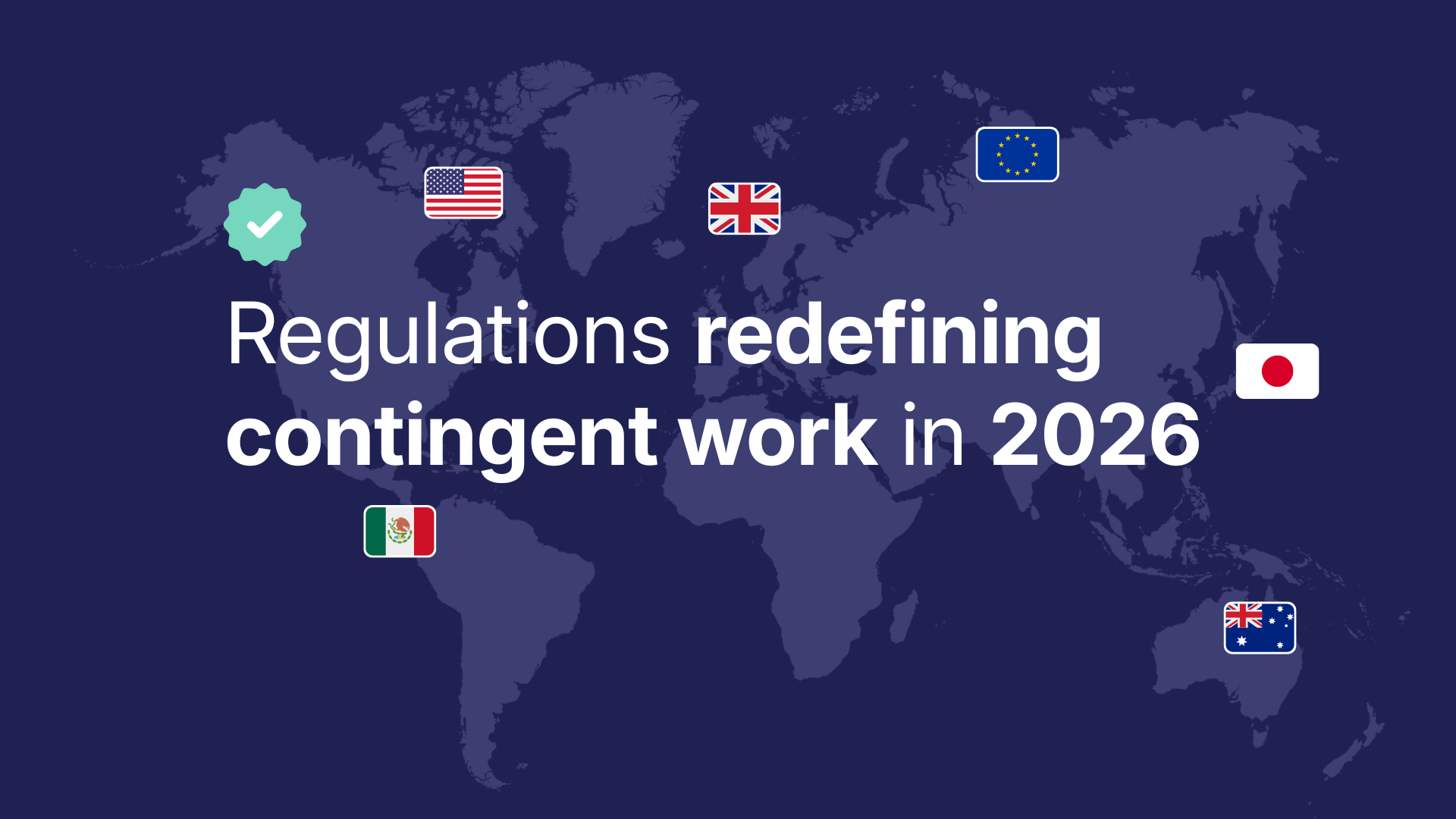With the landscape of contingent workforce management constantly evolving, staying ahead of the curve is crucial for both businesses and contingent workforce professionals.
In a recent partnership with the Staffing Industry Analysts (SIA) our Chief Operating Officer at YunoJuno, Joao Martires, spoke on a webinar to discuss this landscape, with focus on VMS (Vendor Management Systems) and MSP (Managed Service Providers).
To delve deeper into the topic, we ran a Q&A session with Joao…
As a contractor solution provider, what does the contingent workforce landscape look like right now?
Today organisations have complex needs, and in order to keep up, we are seeing a demand for the increased adoption and integration of Artificial Intelligence (AI) and Machine Learning models (ML) to help with automating tasks, driving efficiencies and standardisation of processes.
We’re seeing a much more strategic approach to talent acquisition too, as with the addition of contingent workers such as Independent Contractors, Freelancers, Consultants, Outsourced workers, Agency staff and so on, plus hybrid and remote environments, the workforce is far more complex and distributed than what it was 10 years ago when most HR and talent functions only managed permanent employees, on-site, 9-5.
Businesses are therefore having to rely on advanced real-time analytics and multiple reporting tools integration to collect actionable insights into their workforce trends, performance, and costs. An integrated ecosystem combined with the continuous evolution of predictive analytics enables better workforce planning and ultimately improves decision-making.

What do you think are the most significant VMS/MSP trends occurring in the marketplace?
The integration of AI or ML in VMS/MSP platforms is arguably the most significant trend. With automation, businesses are able to improve their decision processes by introducing:
- Predictive capabilities of future workforce needs
- Optimisation of resource based allocation
- Mapping organisational needs based on skills
Direct contingent talent operation models are on an upward trend due to the potential of engaging with high quality talent while decreasing costs. The typical challenge is ensuring availability of contingent talent at the right time and maintaining a central and structured talent pool by skills effectively. The solution here is to adopt user friendly technologies that enable talent pool management, real-time availability and have the relevant skills taxonomy to match the right skills with the right projects quickly.
For example, at YunoJuno one of the most loved features is the Direct Sourcing Directory that allows for direct sourcing of vetted, trusted, elite talent as well as clear tracking of talent partners ownership periods and costs.
A critical part of driving efficiencies is real-time collaboration and communication between clients, vendors and the workforce, meaning organisations are now requiring the integration of communication tools and features that facilitate this seamlessly.

What are some of the contingent workforce challenges you see clients facing currently?
The challenges we see clients facing currently can be grouped into 3 areas:
- Client and worker UX and mobile accessibility
- Global workforce compliance and payments
- Visibility, control and planning
Client and workers UX and mobile accessibility
The challenge here is not unexpected, with overall Net Promoter Scores (NPS) measuring customer satisfaction, and recommendations of your product or service, averaging around -40 for the industry in 2023. However, platforms that are product and tech driven like YunoJuno are going in the opposite direction, with a positive NPS score of around +40.
With the rapid evolution of consumer products, companies and contingent workforces consciously or unconsciously benchmark today’s user experience to an Apple product interface or to the Amazon Prime next day delivery. With contingent workforces reaching nearly a quarter (23%) of a company structure, this becomes very important, (similar to Employer Branding), to achieve a higher level of worker experience and attract the best talent.
Market players are therefore prioritising user experience by developing proprietary technology that gives their company an advantage over its competitors and sets them apart in the market, by building user interfaces that are intuitive and streamlined optimised for user experience, high service levels and responsiveness. In addition, market players are making mobile accessibility a priority to offer on-the-go real time capabilities for flexibility and accessibility.
Global workforce compliance and payments
Managing contractor compliance with varying regulations, labour laws, and industry standards across different regions and types of contingent workers is no easy task.
A solution to this is to incorporate compliance management features that ensure adherence to legal requirements and reduce the risk of penalties or legal issues.
For example YunoJuno developed a proprietary global worker classification tool where we capture key factors from the client and worker side to confidently classify whether they are independent contractors or not. This removes the uncertainty around what compliance is needed per contractor location, allowing for contracts to be created in minutes and automated payments all over the globe.
Visibility, control and planning
A huge challenge for organisations currently is the limited visibility into contingent workforce data and activities, leading to a lack of control over costs, compliance, and overall workforce management.
With ever growing workforces, clear visibility across commercials and control over your contractor, recruiter and operational spend is paramount to measuring business value. YunoJuno tackles this pain point in one centralised view within the platform, enabling businesses to accurately answer and report on workforce questions such as:
- How many contractors do you have in the business at any one time?
- How many roles are filled in a month and how long did it take?
- What is the split between Direct Sourcing and Talent partners suppliers sourcing?
- What is your contingent workforce spend and split between workers and suppliers’ fees?
- How is PSL currently managed? Are you aware of all suppliers and ownership periods?

What best practice takeaways can you give to help clients manage the evolution taking place for contingent workforces?
- Undertake a health check of your programme
- Become knowledgeable, but be mindful this can take time
- Create a working group to get insights from others viewpoints (e.g. Tax, HR, Finance, TA)
- Investigate new technologies
- Listen to your peers
- Look at automation
- Move out of the mindset of “we have always done it like this”
- Run some pilots, remove a business area (small) from you current programme and run a pilot for 6 months and monitor against a set of criteria, be that time to hire (process efficiencies), business value (savings), workforce compliance, etc.
Keen to know the full landscape?
Watch the full webinar "Join the Evolution: VMS & MSP Transformed" in partnership with Staffing Industry Analysts, with host Senior Director Stephen M Clancy, and client speaker CPO of Kantar Group, Stephen Day.







